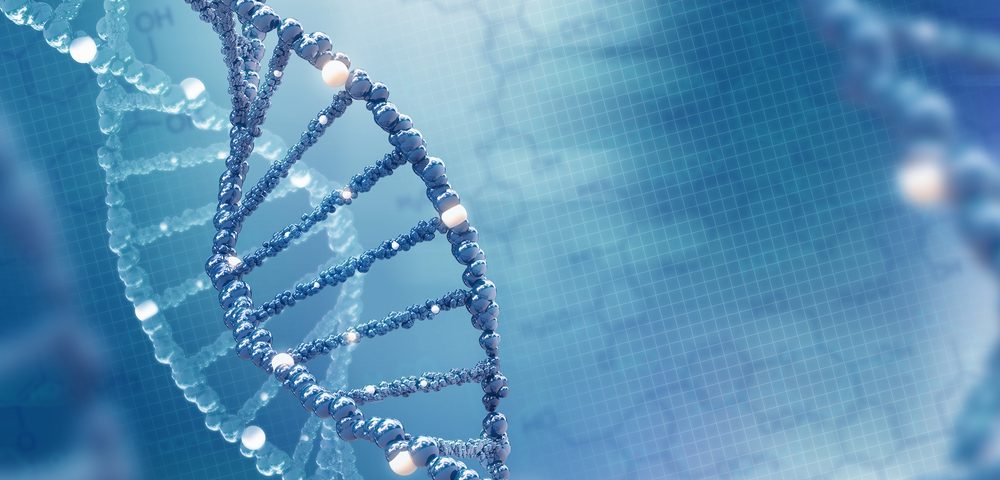Some breast cancers with mutations in DNA damage repair genes may rely on a DNA repair enzyme called polymerase theta for survival, a new study shows, suggesting that blocking this enzyme or its associated pathways could be a therapeutic strategy to treat these breast cancers.
The study, “Genetic determinants of cellular addiction to DNA polymerase theta,” was published in Nature Communications.
Sometimes, the DNA in cells becomes damaged, whether because of toxins or the normal wear and tear of replication. Cells have numerous molecular mechanisms to deal with this, broadly termed the DNA damage response (DDR).
Many cancer cells have deficits in some of these processes. For example, the BRCA genes are involved in DNA repair, which is why cells that lack functional BRCA genes are more likely to develop mutations and, therefore, become cancerous.
A lesser known part of the DDR is theta mediated end joining (TMEJ), a process named for the central enzyme, DNA polymerase theta (encoded by the gene POLQ).
This pathway is relatively error-prone, and it is thought to play a minor role in DNA repair in normal cells, which can generally survive without POLQ. However, previous studies have shown that TMEJ is essential for the survival of cancer cells that lack certain other components of the DDR, such as BRCA.
This finding raised the possibility that blocking TMEJ could be used therapeutically to treat breast cancers lacking BRCA.
In the new study, researchers conducted a screen to look for other genes whose mutations could render cells sensitive to inhibitors of DNA polymerase theta. Conceptually, this involved removing certain genes from the cells’ genome, and looking for those that led to cell death when POLQ was also lacking.
Out of 309 genes associated with DNA repair mechanisms tested, 140 made cells die in the absence of POLQ. Additional control experiments were done to confirm that this effect was a result of the genetic effects and not, for instance, cells reacting to the gene editing process itself. Subsequent experiments testing a subset of these genes further validated 14 that significantly decreased cell survival in the absence of POLQ.
TMEJ is specifically used to repair breaks in DNA, and some of these genes are also involved in repairing this type of DNA damage. This was expected — the idea is that, in the absence of other ways to repair breaks, cells may become “addicted” to TEMJ because otherwise they can’t fix DNA breaks.
But, unexpectedly, many genes were involved in other DDR processes, such as correcting base mismatches.
“The functional diversity of PolqSL [POLQ synthetic lethal] genes suggests that [polymerase theta] becomes essential upon increased levels of endogenous, unrepaired DNA damage, regardless of the precise nature of that damage,” the researchers wrote. In other words, more general deficits in DDR may also cause cells to become “addicted” to TEMJ.
Subsequent experiments showed that TEMJ became activated in response to treatment with several different DNA-damaging agents, and, consistently, cells lacking functional TEMJ were hyper-sensitive to these damaging agents.
Furthermore, TEMJ was over-activated in cells lacking some of the aforementioned genes. Because TEMJ is an error-prone repair system, this led to a characteristic signature of “genomic scars” in the DNA of such cells.
“Our work raises the possibility that these genomic scars might be useful as predictors of addiction to this polymerase theta-dependent pathway,” study co-author Gaorav P. Gupta, MD, PhD, a professor at the University of North Carolina, said in a press release.
All these experiments had been done using cell lines in dishes. The researchers next analyzed data from The Cancer Genome Atlas, a repository of data for human cancers, to see whether these findings were reflective of human disease.
In a subset of samples for which whole-genome sequencing data was available, 41 out of the 94 samples (43.6%) had mutations in genes that rendered cells more dependent on TEMJ, and these samples also showed an elevated TEMJ signature, recapitulating the cell line findings.
Furthermore, in a wider analysis, 275 of 926 (or 29.7%) breast cancers were deficient in at least one of the 140 genes identified in the first analysis. Taken together, these data suggest that targeting TEMJ could be an attractive therapeutic strategy in a larger number of cancers than previously thought.
“There is an open question in terms of: What are the clinical contexts in which polymerase theta inhibitors would be most effective?” Gupta said. “Our work begins to address this topic by identifying a set of gene mutations that may confer greater dependence on this pathway.”

